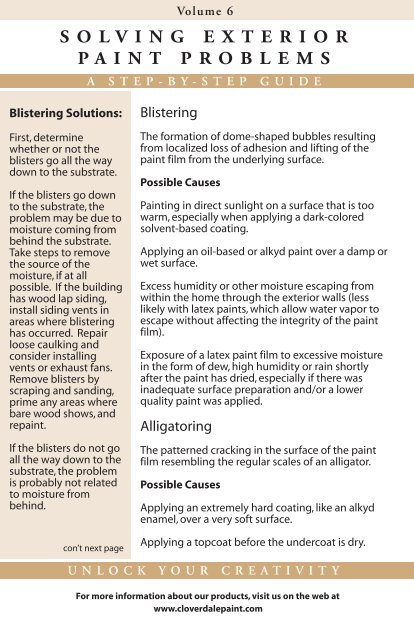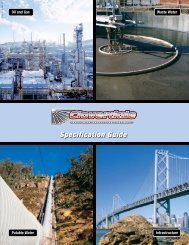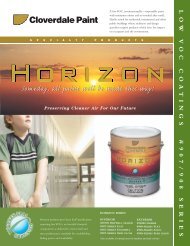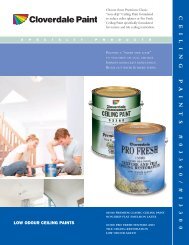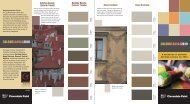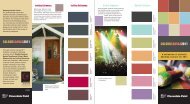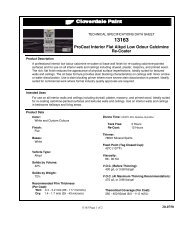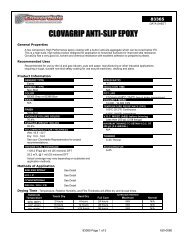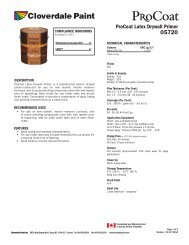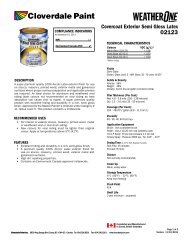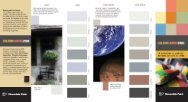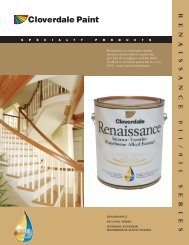DO IT Y OURSELF SERIES - Cloverdale Paint
DO IT Y OURSELF SERIES - Cloverdale Paint
DO IT Y OURSELF SERIES - Cloverdale Paint
You also want an ePaper? Increase the reach of your titles
YUMPU automatically turns print PDFs into web optimized ePapers that Google loves.
Volume 6<br />
SOLVING EXTERIOR<br />
PAINT PROBLEMS<br />
A STEP-BY-STEP GUIDE<br />
Blistering Solutions:<br />
First, determine<br />
whether or not the<br />
blisters go all the way<br />
down to the substrate.<br />
If the blisters go down<br />
to the substrate, the<br />
problem may be due to<br />
moisture coming from<br />
behind the substrate.<br />
Take steps to remove<br />
the source of the<br />
moisture, if at all<br />
possible. If the building<br />
has wood lap siding,<br />
install siding vents in<br />
areas where blistering<br />
has occurred. Repair<br />
loose caulking and<br />
consider installing<br />
vents or exhaust fans.<br />
Remove blisters by<br />
scraping and sanding,<br />
prime any areas where<br />
bare wood shows, and<br />
repaint.<br />
If the blisters do not go<br />
all the way down to the<br />
substrate, the problem<br />
is probably not related<br />
to moisture from<br />
behind.<br />
con’t next page<br />
Blistering<br />
The formation of dome-shaped bubbles resulting<br />
from localized loss of adhesion and lifting of the<br />
paint film from the underlying surface.<br />
Possible Causes<br />
<strong>Paint</strong>ing in direct sunlight on a surface that is too<br />
warm, especially when applying a dark-colored<br />
solvent-based coating.<br />
Applying an oil-based or alkyd paint over a damp or<br />
wet surface.<br />
Excess humidity or other moisture escaping from<br />
within the home through the exterior walls (less<br />
likely with latex paints, which allow water vapor to<br />
escape without affecting the integrity of the paint<br />
film).<br />
Exposure of a latex paint film to excessive moisture<br />
in the form of dew, high humidity or rain shortly<br />
after the paint has dried, especially if there was<br />
inadequate surface preparation and/or a lower<br />
quality paint was applied.<br />
Alligatoring<br />
The patterned cracking in the surface of the paint<br />
film resembling the regular scales of an alligator.<br />
Possible Causes<br />
Applying an extremely hard coating, like an alkyd<br />
enamel, over a very soft surface.<br />
Applying a topcoat before the undercoat is dry.<br />
UNLOCK YOUR CREATIV<strong>IT</strong>Y<br />
For more information about our products, visit us on the web at<br />
www.cloverdalepaint.com


